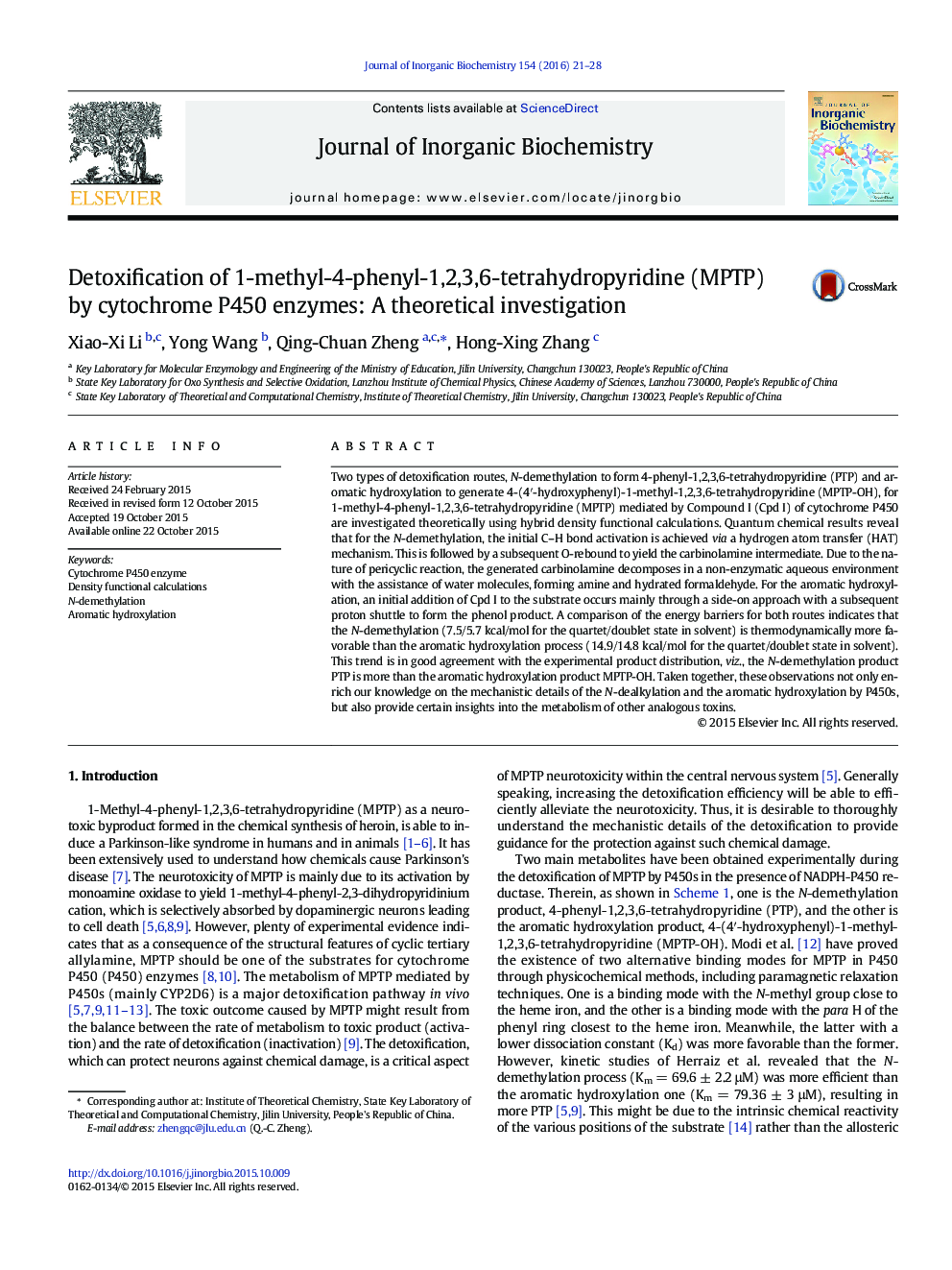| کد مقاله | کد نشریه | سال انتشار | مقاله انگلیسی | نسخه تمام متن |
|---|---|---|---|---|
| 1316485 | 1499433 | 2016 | 8 صفحه PDF | دانلود رایگان |

• Both N-demethylation and aromatic hydroxylation detoxification are investigated.
• C–H bond activation in N-demethylation is achieved via an H-atom transfer (HAT) mechanism.
• Aromatic hydroxylation involves an addition of Compound I to the substrate via a side-on approach.
• The reactivity nature of two routes explains the experimental product distribution.
Two types of detoxification routes, N-demethylation to form 4-phenyl-1,2,3,6-tetrahydropyridine (PTP) and aromatic hydroxylation to generate 4-(4′-hydroxyphenyl)-1-methyl-1,2,3,6-tetrahydropyridine (MPTP-OH), for 1-methyl-4-phenyl-1,2,3,6-tetrahydropyridine (MPTP) mediated by Compound I (Cpd I) of cytochrome P450 are investigated theoretically using hybrid density functional calculations. Quantum chemical results reveal that for the N-demethylation, the initial C–H bond activation is achieved via a hydrogen atom transfer (HAT) mechanism. This is followed by a subsequent O-rebound to yield the carbinolamine intermediate. Due to the nature of pericyclic reaction, the generated carbinolamine decomposes in a non-enzymatic aqueous environment with the assistance of water molecules, forming amine and hydrated formaldehyde. For the aromatic hydroxylation, an initial addition of Cpd I to the substrate occurs mainly through a side-on approach with a subsequent proton shuttle to form the phenol product. A comparison of the energy barriers for both routes indicates that the N-demethylation (7.5/5.7 kcal/mol for the quartet/doublet state in solvent) is thermodynamically more favorable than the aromatic hydroxylation process (14.9/14.8 kcal/mol for the quartet/doublet state in solvent). This trend is in good agreement with the experimental product distribution, viz., the N-demethylation product PTP is more than the aromatic hydroxylation product MPTP-OH. Taken together, these observations not only enrich our knowledge on the mechanistic details of the N-dealkylation and the aromatic hydroxylation by P450s, but also provide certain insights into the metabolism of other analogous toxins.
Detoxification of 1-methyl-4-phenyl-1,2,3,6-tetrahydropyridine (MPTP) mediated by Compound I (Cpd I) of cytochrome P450 enzymes through N-demethylation and aromatic hydroxylation, forming 4-phenyl-1,2,3,6-tetrahydropyridine (PTP) and 4-(4′-hydroxyphenyl)-1-methyl-1,2,3,6-tetrahydropyridine (MPTP-OH), respectively.Figure optionsDownload as PowerPoint slide
Journal: Journal of Inorganic Biochemistry - Volume 154, January 2016, Pages 21–28